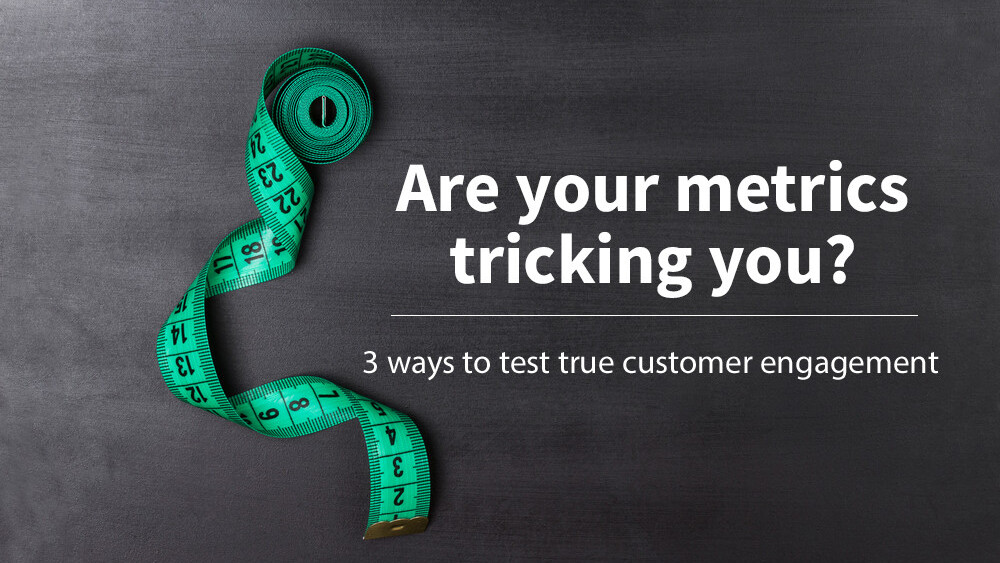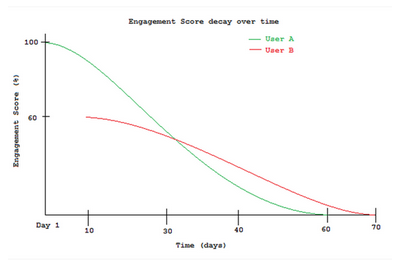
This post originally appeared on the Evergage blog.
B2B marketing can often feel like a big black box. While companies have access to a wealth of customer behavior analytics, these same data points can be extremely deceptive.
Take a metric as simple as ‘time on page,’ for instance. If we notice audiences spending a good chunk of time on specific website sections, we might conclude that they’re engaged with our content. In reality, however, audiences might be spending time on these webpages because they’re confused and struggling to find the information that they need.
It’s easy for marketers to take the metrics that they’re monitoring at face value. As ‘straight-shooters’ we crave efficiency — the shortest path between our efforts and successful outcomes. But this strategic mindset can easily lead us astray.
Here are three techniques to stop your metrics from outsmarting you:
1. Create an engagement score
Rather than looking at one data point to capture engagement, look at the combination of several. This technique is something called an ‘index’ or ‘score’ — which is designed to communicate a quantitative concept or trend from a multi-faceted perspective.
Scores can be calculated from a variety of perspectives — for instance, you might want to calculate engagement as a function of three variables: time spent on site, repeat behavior trends, and webpages consumed.
You’ll also want to monitor your business’s natural conversion process as over time, visitors may be less likely to convert. Engagement scores can ultimately decay over time.
2. Do qualitative research
Marketers have access to a wealth of tools including Google Analytics and other custom dashboards. Numbers are convenient — but often, they’re part of a bigger customer story.
For instance, audiences have a reason for coming to your website and choosing to work with your company — or alternatively, choosing to pursue another option.
Data is in the eye of the beholder, influenced by your unique learning experiences. While you may be certain about the trends that you’re observing, you don’t know what you don’t know. You absolutely need to connect with your customers through in-person, phone, or video interactions to fully understand the stories behind your numbers.
3. Drill down on your conversion milestones
When is a lead a lead?
This question seems simple at first, but beneath the surface, it’s actually quite challenging to answer. If someone downloads an e-book or case study from your website, he or she isn’t necessarily a lead. She might be someone who is interested in learning about your brand, but is she ready to make a direct purchase?
Probably not.
This perspective illuminates why your lead generation milestones are likely inflated — there is a long, windy path between the moment of discovery and the path to sale. Not every person who downloads an ebook will be a qualified lead — instead of looking at a one-dimension user action, you need to understand that person’s entire journey.
That’s why it’s important to build a comprehensive behavioral analytics profile — to look at the combination of element that makes a person a qualified lead. These metrics, like your indexes and scores, may represent a combination of activities that a user has taken on your website.
Look at patterns that correspond with your qualitative research findings and paths to sales.
Final thoughts
Never accept your metrics at face value. There is always more to your customers’ experiences and stories. The more you pay attention to the context behind your numbers, the better positioned your team will be to create a comprehensive behavioral analytics strategy. The key to succeeding with data is the ability to uncover what you may not already know.
Read next: How to tell if you’ve been blindsided by data
Get the TNW newsletter
Get the most important tech news in your inbox each week.





